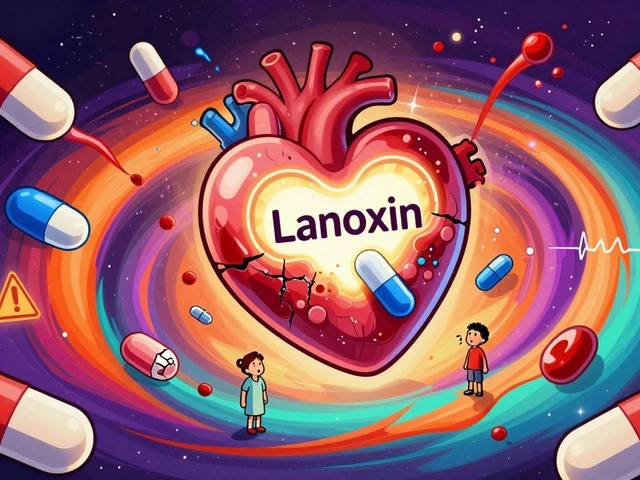Clonidine Comparison
When researching Clonidine, a centrally acting alpha‑2 adrenergic agonist that lowers blood pressure and eases withdrawal symptoms. Also known as Catapres, it reduces sympathetic nerve activity by stimulating receptors in the brainstem. This mechanism makes it a go‑to option for several conditions, but the real question is how it stacks up against other drugs. Below you’ll find a clear picture of what Clonidine does, who typically uses it, and why a Clonidine comparison matters for anyone weighing treatment choices.
Key related concepts you’ll meet in the comparison
First, understand that Clonidine belongs to the Alpha‑2 adrenergic agonist, a drug class that dampens norepinephrine release and thus calms the nervous system. This class includes medications like guanfacine and dexmedetomidine, each with slightly different strength and side‑effect profiles. Second, think of Clonidine as a Hypertension medication, a treatment used to lower high blood pressure by relaxing blood vessels. While many patients reach their target BP with ACE inhibitors or calcium channel blockers, Clonidine offers a backup when those fail or when a rapid drop is needed.
Third, Clonidine is valued in Opioid withdrawal treatment, a supportive therapy that eases symptoms like anxiety, sweating, and muscle aches during detoxification. Clinics often combine it with buprenorphine or lofexidine to smooth the taper. Fourth, the drug makes its way into ADHD management, especially when stimulants cause intolerable side effects. Its calming effect can sharpen focus without the jitteriness that some patients experience.
These relationships form a web: the drug class (alpha‑2 agonist) enables the blood‑pressure effect, which in turn opens the door for withdrawal and ADHD uses. Understanding this web helps you compare Clonidine to alternatives like guanfacine (another alpha‑2 agent), amlodipine (a calcium channel blocker for hypertension), or lofexidine (a newer withdrawal aid). Each alternative carries its own set of attributes – potency, half‑life, cost, and side‑effect profile – that influence which one fits best for a given patient.
When you dive into the articles below, expect a side‑by‑side look at dosage ranges, common adverse events (dry mouth, sedation, rebound hypertension), and practical tips for switching or combining therapies. You’ll also see real‑world case snippets that illustrate when a clinician might prefer Clonidine over guanfacine for ADHD, or why a detox program would reach for Clonidine instead of lofexidine. The goal isn’t just to list facts; it’s to give you a decision‑ready overview that matches your health situation or professional needs.
Now that you have the big picture, scroll down to explore detailed comparisons, safety checklists, and dosing tables that make the choice between Clonidine and its peers as clear as possible.
Clonidine vs Alternatives: A Detailed Comparison Guide
A comprehensive guide comparing clonidine with its main alternatives, covering mechanisms, uses, side effects, and how to pick the right drug for hypertension or ADHD.





